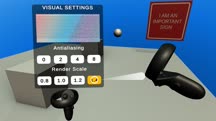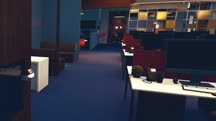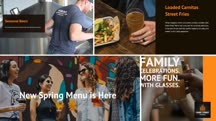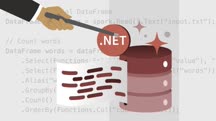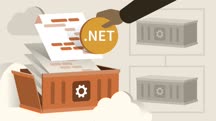Course catalog
Categories
Showing 1,361-1,380 of 1,450 items.
Understanding the Leadership Behaviors That Can Sabotage Your Success (214095)
If you’re a current leader in a career rut or someone who keeps getting passed over for leadership opportunities, this course can help you find the forward momentum you need. Learn how to identify the hidden roadblock—or blind spots—that are inadvertently holding you back, and discover how you can manage them to accelerate your career growth.
Join instructor Sara Canaday as she shares examples of leadership blind spots commonly found in the business world and guides you to explore the perception gaps that could be undermining your professional reputation. By applying Sara’s targeted strategies to close those gaps, you can enhance your intangible skills and quickly position yourself as someone who is poised and prepared to move to the next level as a more powerful leader.
Join instructor Sara Canaday as she shares examples of leadership blind spots commonly found in the business world and guides you to explore the perception gaps that could be undermining your professional reputation. By applying Sara’s targeted strategies to close those gaps, you can enhance your intangible skills and quickly position yourself as someone who is poised and prepared to move to the next level as a more powerful leader.
Understanding Zero Trust (220181)
The traditional model of a firewalled enterprise separating trusted insiders from untrusted outsiders worked effectively for years, but it’s no longer a viable option in today’s world. Workers working remotely, insider threats, and attackers taking advantage of trust between internal systems—these demand a new approach to extending protection to all users and their devices, regardless of their location. In this course, Malcolm Shore shows how to better protect your networks and systems by adopting what’s known as a zero trust approach to access control—removing trust relationships in networks and requiring that trust decisions are made at the time that access is requested. Malcom starts with a brief history of the concept of software trust, before moving onto key facets of the zero trust approach, the reasons for wanting to minimize trust relationships in network architectures, and the tenets and models that have been proposed for zero trust.
Unique Habits: Be Successful Your Own Way (229514)
We all understand the value and necessity of processes in business, but did you know you can create processes that will be just as valuable to your career and daily life? In this course, Dave Crenshaw offers a powerful guide for anyone who wants a systematic way to improve their productivity. Dave explains how customized “unique habits” help you find your own pathway. He stresses the importance of knowing your motivation, as aiming for a specific result can help drive you forward. Dave steps through a two-week test to try out the success system you build, then shows you how to fine-tune the system and explains when it might be time to get a new system. He concludes with a discussion of ways to hold yourself accountable to your own unique success system.
This course was created by Dave Crenshaw and Invaluable Inc. We are pleased to offer this training in our library.
This course was created by Dave Crenshaw and Invaluable Inc. We are pleased to offer this training in our library.
Unity 3D 2021 Essential Training (222272)
Unity is a powerful interactive development tool for mobile and desktop games, as well as real-time simulations and visualizations. In this course, Emmanuel Henri reviews techniques used in Unity visualizations and development and introduces the basics of level design, lighting, materials, and animation. Emmanuel shows how to set up a project and walks you through the Unity user interface. He demonstrates how to apply materials, add animation to bring your project to life, add post-processing effects, and more. To wrap up, he covers how to package and build a playable project.
Unity: AR Visualization 01 Basic Concepts (222799)
Mobile augmented reality (AR) is currently the most popular and pervasive form of AR in the market. The applications of AR for the architecture, engineering, and construction (AEC) industries have already started to prove themselves indispensable. In this course, learn how to use the Unity game engine to create an AR mobile application for iOS or Android to view and interact with a 3D model in the real world. As a bonus, instructor Roger Miller also looks at working with the Unity Reflect plugin to help get CAD and BIM data into Unity. If you are an AEC professional, or a Unity engineer looking to break into the augmented reality space, this course is for you.
Unity: Building VR User Interfaces (224601)
The explosion of growth and innovation in the virtual reality (VR) industry has led some to describe it as the next level in computing. In this course, discover how to create meaningful interactions for users of VR content. Join instructor Roger Miller as he shows how to use Unity to create intuitive user interfaces for VR on the Oculus Quest. Learn about critical visualization tools and concepts for VR. Explore the technological and psychological implications of common UX interface elements like heads-up displays, reticles, and dialogs. Learn about considerations like viewing distance and creating UI for the whole body. Plus, discover how to set up mipmaps, implement basic teleportation to navigate your 3D world, and much more.
Unity: Product Visualization (223309)
Our world is filled with cool products, designed by talented and skilled creatives. Unity is a real-time rendering tool that is ideal for showcasing great product designs and ideas. In this course, designer Alan Thorn demonstrates step by step how to use Unity to comprehensively previsualize a retro-style coffee maker in an interactive way. Alan shows how to build the coffee maker from start to finish in Unity, and test out different features like pushable buttons, levers, moveable mugs, and other engaging product characteristics that can be previewed effectively in real time. He also demonstrates how to create camera sequences and work with responsive and adaptive user interfaces. This course is ideal for digital creatives and product designers seeking to showcase their ideas with depth and energy. By the end of this course, you'll be able to create real-time visualizations for your own products using the Unity engine.
Unix Essential Training (221303)
Although it was developed in the 1970s, Unix remains an essential skill for anyone working in technology today, and serves as the backbone of many modern technologies like smartphones, streaming services, and supercomputers. In Unix Essential Training, Kevin Skoglund teaches Unix from the ground up, starting with the basics of the command line and the most important Unix commands. Regardless of whether you’re using Mac OS, Windows, or Linux, Kevin helps you unlock the powerful capabilities of Unix by walking you through how to use command-line syntax to perform common tasks such as file management, data entry, and text manipulation. By the end of the course, you’ll have tools that you can immediately apply to your own work.
Unlocking Authentic Communication in a Culturally-Diverse Workplace (213874)
What does it take to be a great communicator, particularly in a global and culturally-diverse modern workplace? The answer is, largely, authenticity. In this course, Jonathan Wilson teaches key principles of authentic communication, real-world tips for practicing authentic communication, and how to develop cultural awareness so you can build relationships, support colleagues from underrepresented groups, and be a more effective professional. Jonathan explores what it means to be authentic in a way that celebrates who you are, resonates with others, highlights the importance of cultural differences, and energizes those around you. It may take a while and some work to attain competence and expertise in these areas, but if you’re looking to be someone who can connect with anybody with ease, navigate tricky conversations, and learn what matters to people, join Jonathan in this course.
Unlocking Your Potential (232285)
The world is full of opportunity, but sometimes we get in our own way. Do you find yourself falling into ruts or engaging in unhelpful thinking patterns that keep you from your goals? If so, then this course can help. Join instructor Hallie Avolio as she shares strategies for unlocking your success and creating the life you've always wanted.
Hallie explains how to find your "why," determine your core values, and combine the written word and visualization to reach your goals sooner. She provides tools for dealing with mistakes and setbacks without getting derailed, and explains how to turn your core values into personal affirmations, along with other language-based techniques. Plus, learn how to calm your mind, establish habits that lead to confidence and success, and gravitate towards the right people and jobs. Unlocking your potential starts with you. After completing this course, you'll be prepared to do the work, dive in, and start to make change happen.
This course was created by Madecraft. We are pleased to host this training in our library.

Hallie explains how to find your "why," determine your core values, and combine the written word and visualization to reach your goals sooner. She provides tools for dealing with mistakes and setbacks without getting derailed, and explains how to turn your core values into personal affirmations, along with other language-based techniques. Plus, learn how to calm your mind, establish habits that lead to confidence and success, and gravitate towards the right people and jobs. Unlocking your potential starts with you. After completing this course, you'll be prepared to do the work, dive in, and start to make change happen.
This course was created by Madecraft. We are pleased to host this training in our library.

Unreal Engine Blueprint Interaction for ArchViz Projects (226777)
Architectural visualization renderings allow designers to create amazingly detailed virtual building models, and make the designer-client interaction much easier than in the days of hand-drawn designs. As technology catches up with imagination, it’s now possible to generate extremely detailed interactive architectural visualizations, creating a more engaging experience than just watching a video or flicking through still image renders. In this course, Joel Bradley walks you through the creation of four key types of interactions that will give arch viz artists a wide range of options on their next project. Through the creation of interactive items like computer monitors, swinging doors, and functioning light switches, Joel illustrates how adding interactive behaviors can give a client presentation a sense of immersion that helps the project move smoothly through the design phase.
Unreal Engine: ArchViz Terrain Techniques (221915)
Unreal Engine is a real-time 3D game engine often used to create immersive virtual worlds and interactive experiences. This course highlights techniques you can use to build landscapes and terrains, as well as the concepts underpinning terrain objects. Instructor Joel Bradley explains how landscapes can aid our visualization, then dives into ways you can set up the terrain transformations and understand sections and components as they relate to architectural visualizations. Joel goes over Twinmotion and how to use it, as well as recommendations for a new far-distance terrain. He shows you how to use Landscape Edit Layers, import terrain height data, and use the Sculpt tool. Joel steps you through paint layers, map tiling, and enhancing your visualization with landscape materials, then concludes by pointing you toward some helpful next steps.
Unreal Engine: Creating Templates for Visualization Projects (226471)
Starting a new project in Unreal can be an intimidating process. There are a lot of settings that need to be just right for your scene to work correctly and look great. What if you didn't have to start from scratch each time? In this course, instructor Brian Bradley shows you how to create project templates that will make your workflow much more manageable and get you into creating faster. After explaining the benefits of setting up the templates you will need before you start new projects, Brian meticulously steps you through creating an Arch Viz template, including basic master materials that you can use to populate a visualization scene quickly and easily. Plus, he covers in detail the steps in creating a Product Viz template.
Note: This course was created by Brian Bradley. We are pleased to host this training in our library.
Note: This course was created by Brian Bradley. We are pleased to host this training in our library.
Unreal Engine: Post Process Effects (226505)
By mastering the post processing effects in Unreal, artists can have total control over the look and feel of their final scene. In this course, join instructor Joel Bradley as he goes over the essential tools and techniques you need to take your finished scene to the next level of realism. Learn how to add imperfections to the camera to better mimic how real-world cameras react. Discover how to correctly add lens effects, adjust their intensity, and tint the lens flares for greater artistic control. Learn how to use global controls and lookup tables to adjust color and lighting inside a space. Plus, learn how to create a post process material, add animated post process effects to enhance your production, and more.
Up and Running with LUNA (227831)
Get up and running with LUNA, the new recording system from Universal Audio (UA) for fast, powerful no-latency music production. Instructor Scott Hirsch helps you set up a project with LUNA and make your first recording, configure headphone cueing mixes, and record multiple channels simultaneously in LUNA. Then discover how to record and edit MIDI tracks; use inserts, sends, and buses; and make a comp out of multiple recording tracks. Finally, learn how to output your final mixdown and mix stems as well as export tracks to other DAWs, all using the analog processing emulations from UA.
Using Adobe Spark to Promote Your Brand (223785)
Have you wondered how to use your Spark account to promote your brand, how to work with custom logos and fonts in Spark, or how to collaborate with others on a branded account? Wonder no more. In this course, instructor Richard Harrington shows you how to use Adobe Spark to promote your company or project. Richard goes over how to use a branded account and create consistent branding in Adobe Spark. He explains how to integrate your logo, fonts, and colors into a wealth of design options, then goes into how to create and manage the layout of templates in Adobe Spark. Richard discusses how to manage a brand and collaborate with others. He also covers essential design skills for Spark post, video, and page projects.
Note: This course was created by RHED Pixel. We are pleased to host this training in our library.
Note: This course was created by RHED Pixel. We are pleased to host this training in our library.
Using Adobe XD with the Creative Cloud Apps (225893)
In addition to all the tools and plug-ins that make Adobe XD a standout design tool, a key advantage of XD is its place in the Adobe Creative Cloud ecosystem. In this course, Bart Van de Wiele shows how you can leverage the strength of XD with other design tools like Photoshop, Illustrator, InDesign, and Adobe Stock. He shows how to open and place native Illustrator and Photoshop content into Adobe XD, how to share and update content with Creative Cloud Libraries, and how to leverage Adobe Stock in your creative process. In addition to showing how to bring content into Adobe XD, Bart also shows how to export content out of XD and use it in other design applications.
Using Apache Spark with .NET (226216)
Kick-start your journey into big data analytics with this introductory course about .NET for Apache Spark. Instructor Brigit Murtaugh explains how .NET for Apache Spark will empower you to participate in the world of big data within the .NET ecosystem. She shows you how to create a simple .NET for Apache Spark word count application and run it on your local machine, then shows you how to write a batch processing app. Next, she steps you through a structured streaming app that processes words live as you type them into a terminal. Brigit covers how to leverage ML.NET in combination with .NET for Apache Spark to perform sentiment analysis on a set of online reviews. She teaches you how to deploy your .NET for Apache Spark app to Azure Databricks. Then she concludes by demonstrating how to deploy the .NET for Apache Spark app to Azure HDInsight.
This course was created by Microsoft.NET. We are pleased to host this training in our library.
This course was created by Microsoft.NET. We are pleased to host this training in our library.
Using Data Science to Hire Employees (110327)
Jeff Selingo visits LinkedIn Studios to weigh in on the importance of using data when making hiring decisions, the complexity of today's job market, and the trends that data science is revealing.
Using Docker and .NET Core (221235)
Why use containers with your .NET Core applications? When you write an application, you have to consider the application code, frameworks, packages, and the underlying operating system itself. Using Docker allows you to encapsulate everything you need to run an application, with all its dependencies, in one nice, neat package that you can replicate on any machine or workstation, as many times as you need. In this course, Shayne Boyer and Lisa Guthrie start with the very basics of Docker, covering the concepts and practical uses, then move on to integrating Docker with Visual Studio to help you containerize your apps with just a few clicks. Finally, Shayne and Lisa show you a simple way to publish your containerized web app.





